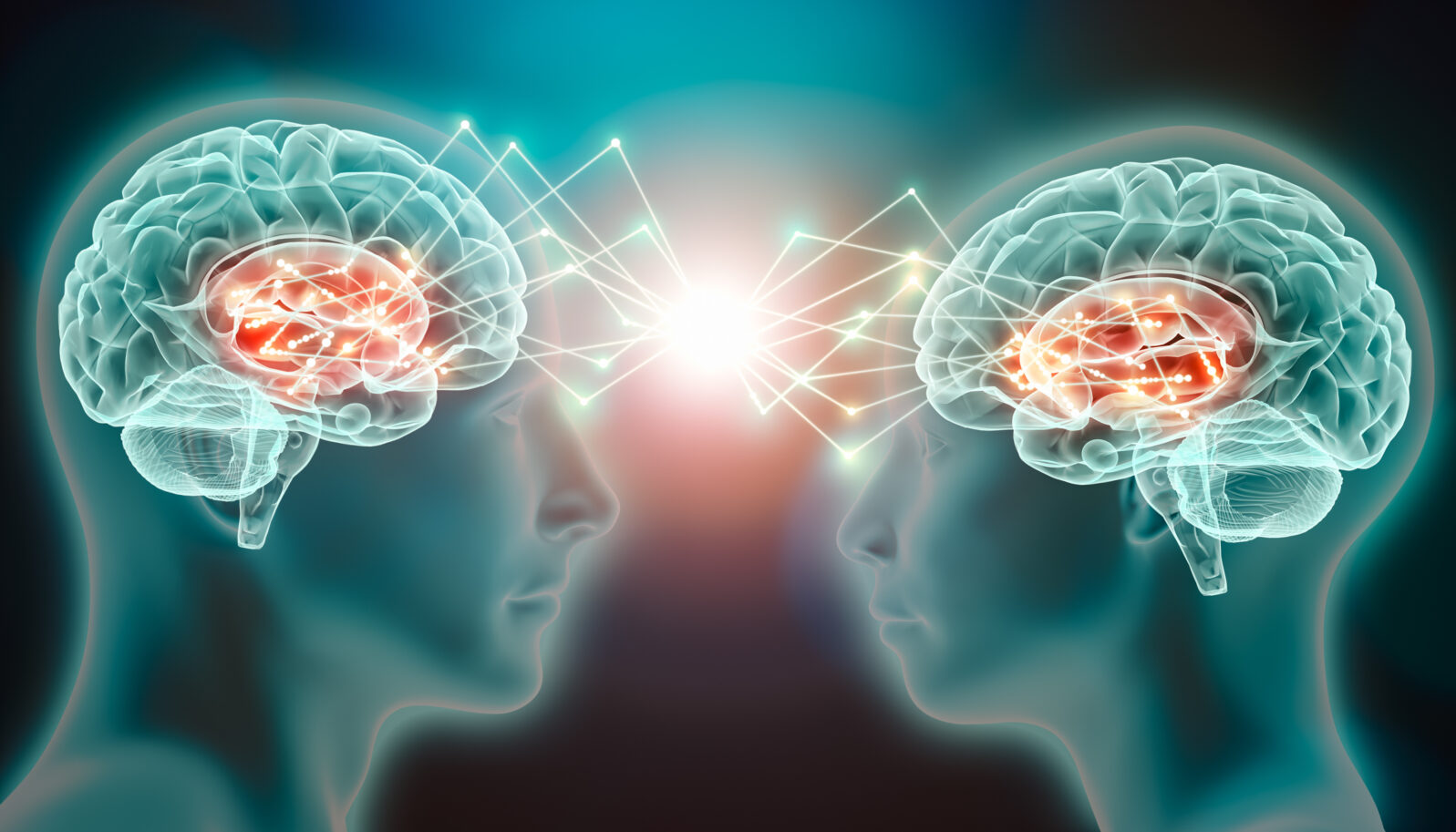When You Sync With Someone, Your Brains Wave Together
Neuroscientists have found that co-operation results in brain wave synchronyAt Scientific American, Lydia Denworth brought up an interesting topic earlier this month: The way that brain waves synchronize between two people who are communicating successfully:
Neurons in corresponding locations of the different brains fire at the same time, creating matching patterns, like dancers moving together. Auditory and visual areas respond to shape, sound and movement in similar ways, whereas higher-order brain areas seem to behave similarly during more challenging tasks such as making meaning out of something seen or heard. The experience of “being on the same wavelength” as another person is real, and it is visible in the activity of the brain.” – Lydia Denworth, “Brain Waves Synchronize when People Interact,” Scientific American, July 1, 2023
For example, she tells us, “Couples exhibit higher degrees of brain synchrony than nonromantic pairs, as do close friends compared with more distant acquaintances.” There’s a name for the study of such moments: collective neuroscience.
Synchrony is not a brand new discovery but methods of tracking it (hyperscanning) have become more innovative in the last decade. The prospect of using synchrony to better track and understand success or failure in learning environments is attracting neuroscientists to the field. One study from the Basque research centre BCBL using electroencephalography (EEG) reported,
Thus, the rhythms of the brainwaves corresponding to the speaker and the listener adjust according to the physical properties of the sound of the verbal messages expressed in a conversation. This creates a connection between the two brains, which begin to work together towards a common goal: communication.
For the purposes of the study, the BCBL researchers used 15 dyads of people of the same sex, complete strangers to each other, separated by a folding screen. This ensured that the connection generated was truly thanks to the communication established.
Following a script, the dyads held a general conversation and took turns playing the roles of speaker and listener.
– SINC. “Our brains synchronize during a conversation.”, 20 July 2017. The paper is open access.
There is some evidence that synchrony makes people more willing to help each other. According to a 2017 study of synchrony,
People tend to be more prosocial after synchronizing behaviors with others, yet the underlying neural mechanisms are rarely known. In this study, participant dyads performed either a coordination task or an independence task, with their brain activations recorded via the functional near-infrared spectroscopy hyperscanning technique. Participant dyads in the coordination group showed higher synchronized behaviors and greater subsequent inclination to help each other than those in the independence group, indicating the prosocial effect of interpersonal synchrony. – The paper is open access.
One 2010 Italian study found that the brain waves of members of a team lined up with each other but not with those of members of the opposing team:
Synchrony was found to predict engagement in classrooms too, as Denworth noted in a 2019 article:
In a series of studies in New York City high schools, a team of New York University researchers including Poeppel, Suzanne Dikker and Ido Davidesco took repeated EEG recordings from every student in a biology class over the course of a semester. They found that students’ brainwaves are more in sync with each other when they are more engaged in class. Brain-to-brain synchrony also reflects how much students like each other and the teacher—closer relationships lead to more synchronization. Their current study is examining whether levels of brain synchrony during class predict retention of material learned. “I think what we’re doing is very useful,” Poeppel says. “How [do we] use these techniques in a targeted way for STEM learning?” – Lydia Denworth, “‘Hyperscans’ Show How Brains Sync as People Interact,” Scientific American, April 10, 2019 The paper is open access.
Humans aren’t the only life forms that synchronize. Bats and mice have also been observed to synchronize their brains about matters that mutually concern them. One interesting detail researchers have found is that when one mouse is dominant and another submissive, the level of synchrony was higher. However, it’s different with bats, where the greatest synchrony occurred among bats that more frequently clustered together.
You may also wish to read: How can a woman missing her olfactory bulbs still smell? The brain’s plasticity intrigues and puzzles researcher, and it also raises a larger issue. How does the human mind so often find a way to function despite the absence of what we think are critical brain parts?
